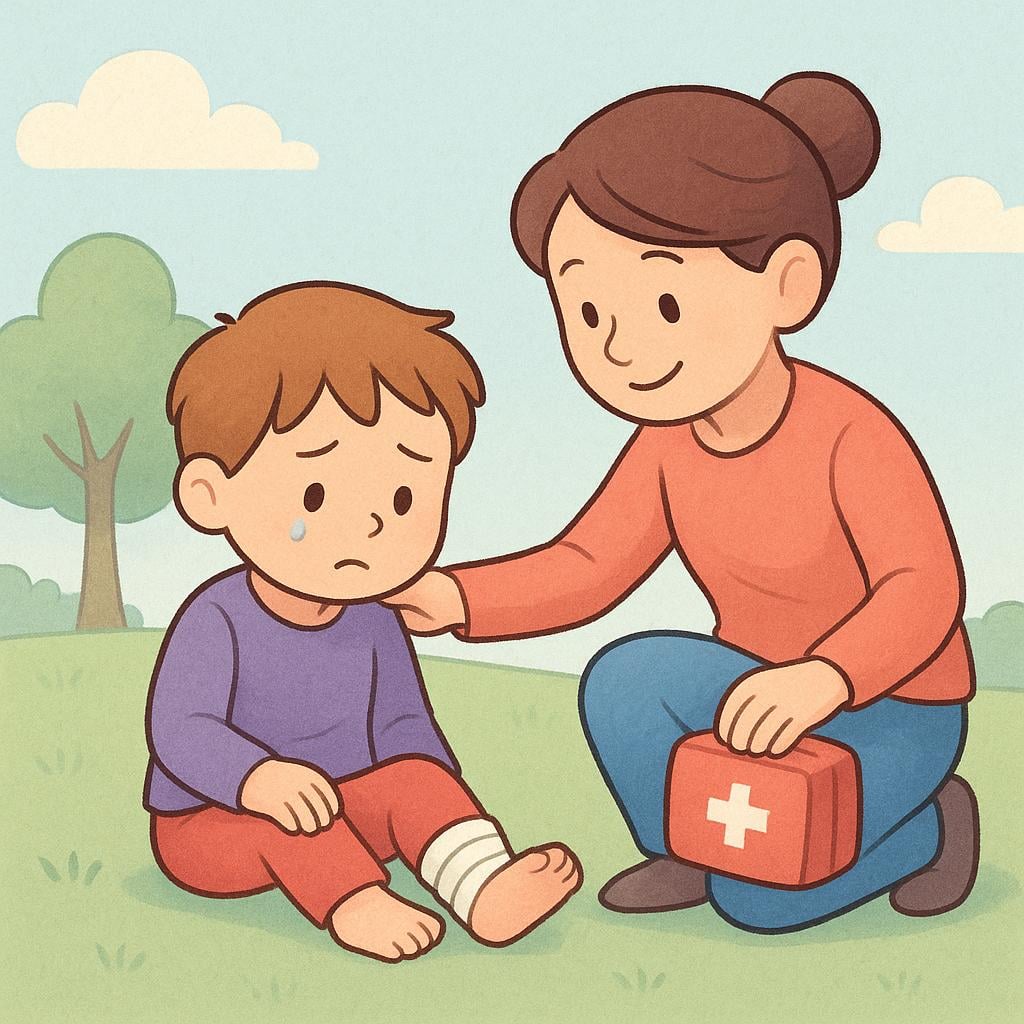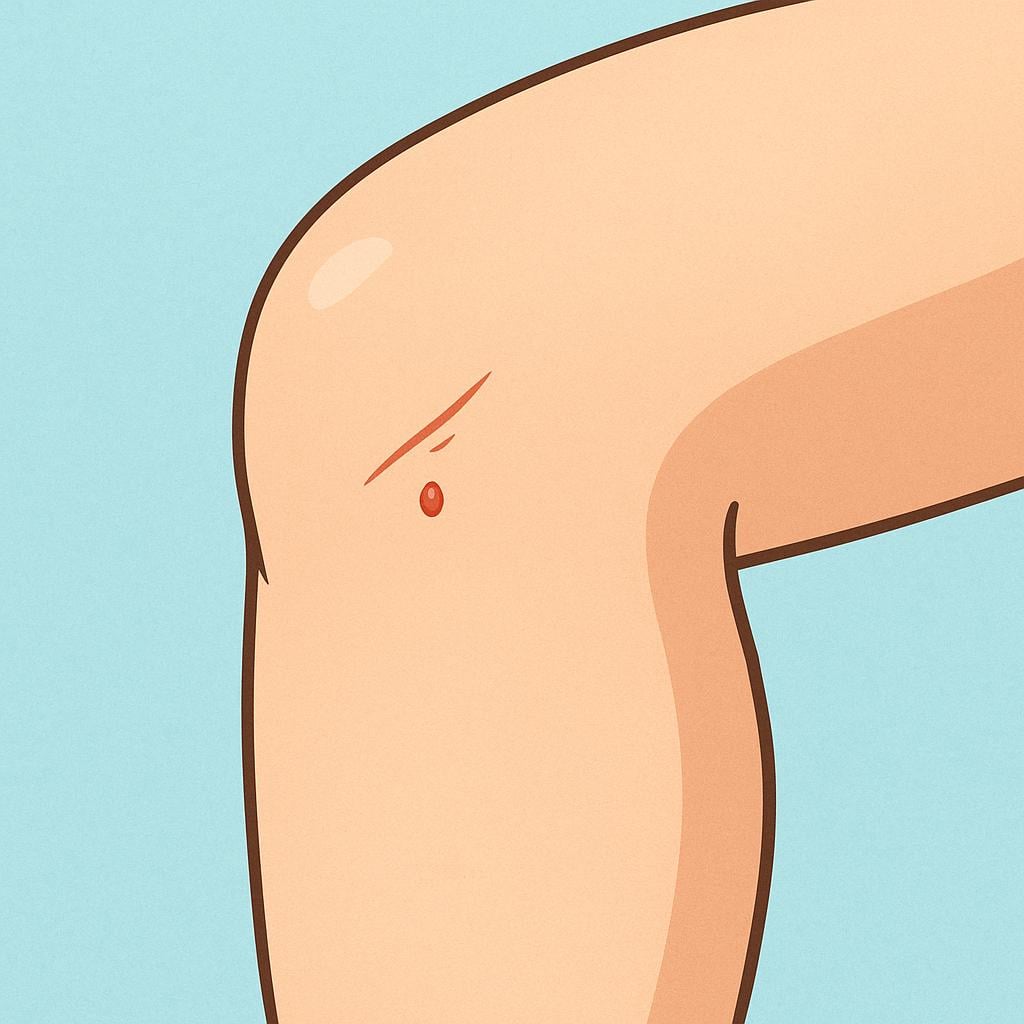herido
/eh-REE-doh/
wounded

Herido (wounded) describes the state of having a physical injury.
herido(adjective)
wounded
?suffering physical injury
injured
?hurt, not necessarily severely
,hurt
?general description of pain/damage
📝 In Action
El corredor estaba herido después de la caída, pero siguió corriendo.
A2The runner was wounded after the fall, but he kept running.
Encontraron la caja fuerte herida con marcas de intento de robo.
B1They found the safe damaged with marks of an attempted robbery.
💡 Grammar Points
Changing the Ending
Like many Spanish adjectives, 'herido' must match the person or thing it describes: 'herido' (masculine singular), 'herida' (feminine singular), 'heridos' (masculine plural), 'heridas' (feminine plural).
❌ Common Pitfalls
Using the Wrong Verb for State
Mistake: "Soy herido (I am wounded)."
Correction: Estoy herido. We use 'estar' (to be in a temporary state) with 'herido' because it describes the current condition of the person.
⭐ Usage Tips
Emotional Wounds
You can also use 'herido/a' metaphorically to mean emotionally hurt or offended: 'Ella se sintió herida por el comentario.'

As a noun, herido refers to an injured person or casualty.
📝 In Action
Los servicios de emergencia atendieron a los heridos del accidente.
B1The emergency services attended to the injured people from the accident.
Solo hubo un herido leve en el choque de coches.
B2There was only one lightly injured person in the car crash.
💡 Grammar Points
Using the Adjective as a Noun
In Spanish, you can often turn an adjective describing a state into a noun referring to the person who is in that state. 'El herido' is 'the injured man'; 'la herida' is 'the injured woman'.
⭐ Usage Tips
Formal Language
You will hear this noun form often in the news or official reports, as it is a concise way to refer to those requiring medical aid.

Herido is the past participle used to describe an action that has resulted in a wound.
📝 In Action
El cazador ha herido al venado con una flecha.
A2The hunter has wounded the deer with an arrow.
La víctima fue herida en el brazo, pero se recuperará.
B1The victim was wounded in the arm, but she will recover.
💡 Grammar Points
Building Perfect Tenses
'Herido' is the fixed '-ido' form that combines with the verb 'haber' to show an action completed in the past: 'He herido' (I have wounded).
Passive Voice
When used with the verb 'ser' (to be), it describes who received the action. In this use, 'herido' must match the gender and number of the person receiving the action ('fue herido', 'fueron heridas').
❌ Common Pitfalls
Matching the Participle
Mistake: "Hemos heridos al enemigo (We have wounded the enemy)."
Correction: Hemos herido al enemigo. When used with 'haber' to form perfect tenses, the '-ido' form never changes its ending, regardless of who did the action or who received it.
✏️ Quick Practice
💡 Quick Quiz: herido
Question 1 of 2
Which sentence correctly uses 'herido' as a noun?
📚 More Resources
Frequently Asked Questions
What is the difference between 'herido' and 'lesionado'?
Both mean 'injured' or 'hurt.' 'Herido' often implies a wound that breaks the skin or causes visible damage (like a bullet wound or cut), while 'lesionado' often refers to general injuries, strains, or sports injuries (like a muscle tear). However, in general conversation, they are often interchangeable.
Why does 'herido' sometimes change its ending and sometimes not?
It depends on its job! If its job is to describe a person or thing (like an adjective or in the passive voice), it changes its ending: 'herida/heridos.' If its job is to help form a compound verb with 'haber' (like 'ha herido'), it is fixed and never changes.